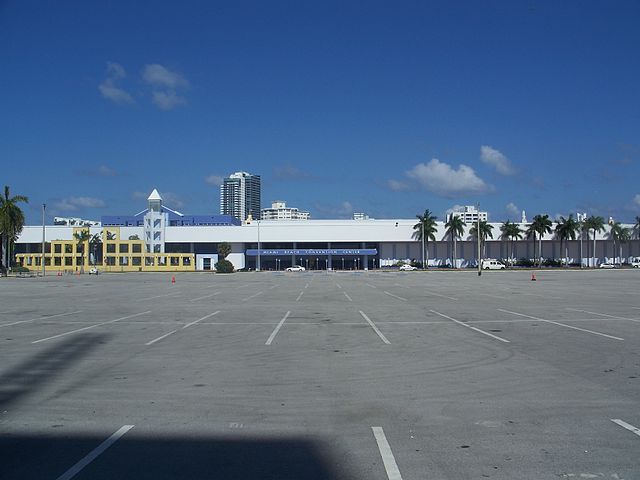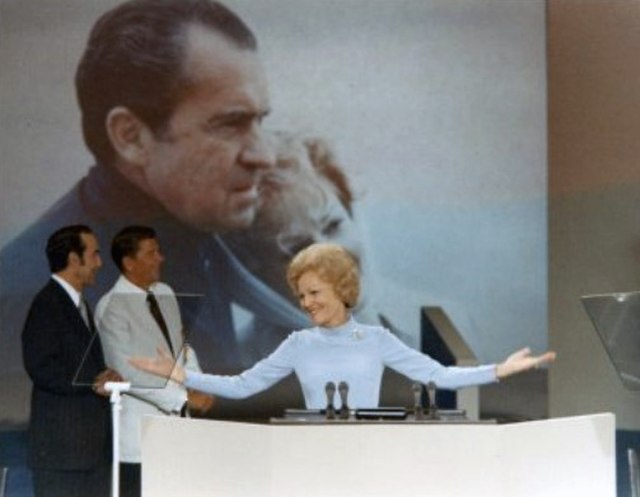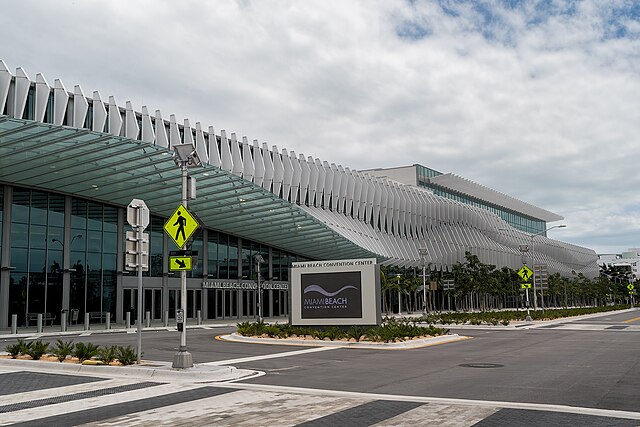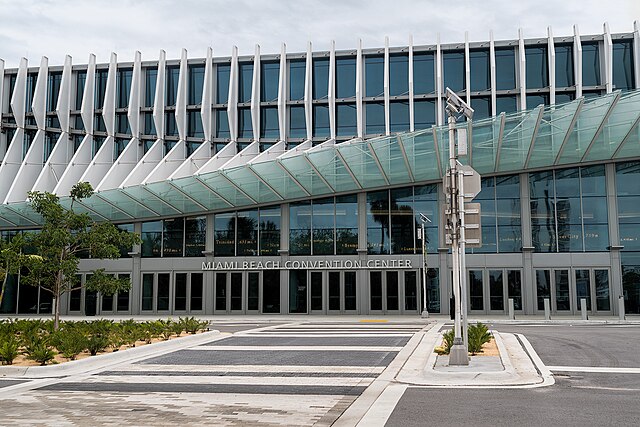1972 Republican National Convention
The 1972 Republican National Convention was held from August 21 to August 23, 1972, at the Miami Beach Convention Center in Miami Beach, Florida. It nominated President Richard M. Nixon and Vice President Spiro T. Agnew for reelection. The convention was chaired by House minority leader and future Nixon successor Gerald Ford of Michigan. It was the fifth time that Nixon had been nominated on the Republican ticket for vice president or president. Nixon's five appearances on his party's ticket matched the major-party American standard of Franklin D. Roosevelt, a Democrat who had been nominated for vice president once and president four times.
The Miami Beach Convention Center was the site of the 1972 Republican National Convention
First Lady Pat Nixon addresses the convention. She was the first First Lady since Eleanor Roosevelt to address a party convention, and the first Republican First Lady to do what is now considered common practice.
Protestors at the convention.
Miami Beach Convention Center
The Miami Beach Convention Center is a convention center located in Miami Beach, Florida. Originally opened in 1958, the venue was renovated from 2015 to 2018 for $620 million. The re-imagined and enhanced MBCC includes a 60,000-square-foot Grand Ballroom, four junior ballrooms, 500,000 square feet of flexible exhibition space, 84 meeting rooms, and pre-function space, as well as outdoor spaces and terraces.
Exterior of venue (c. 2019)
Venue facade c.2011
Miami Beach Convention Center (2019)
Main (west) entrance







